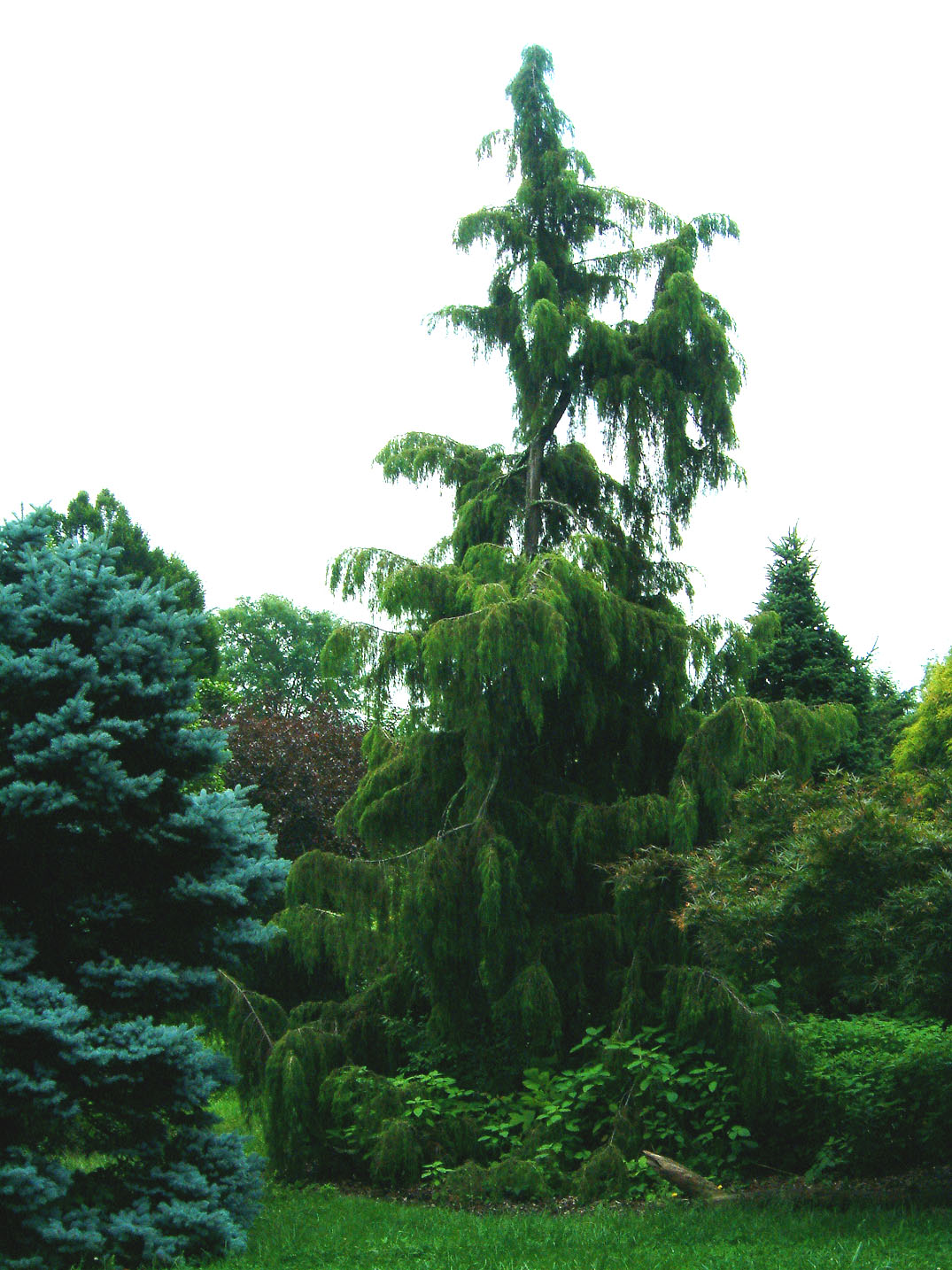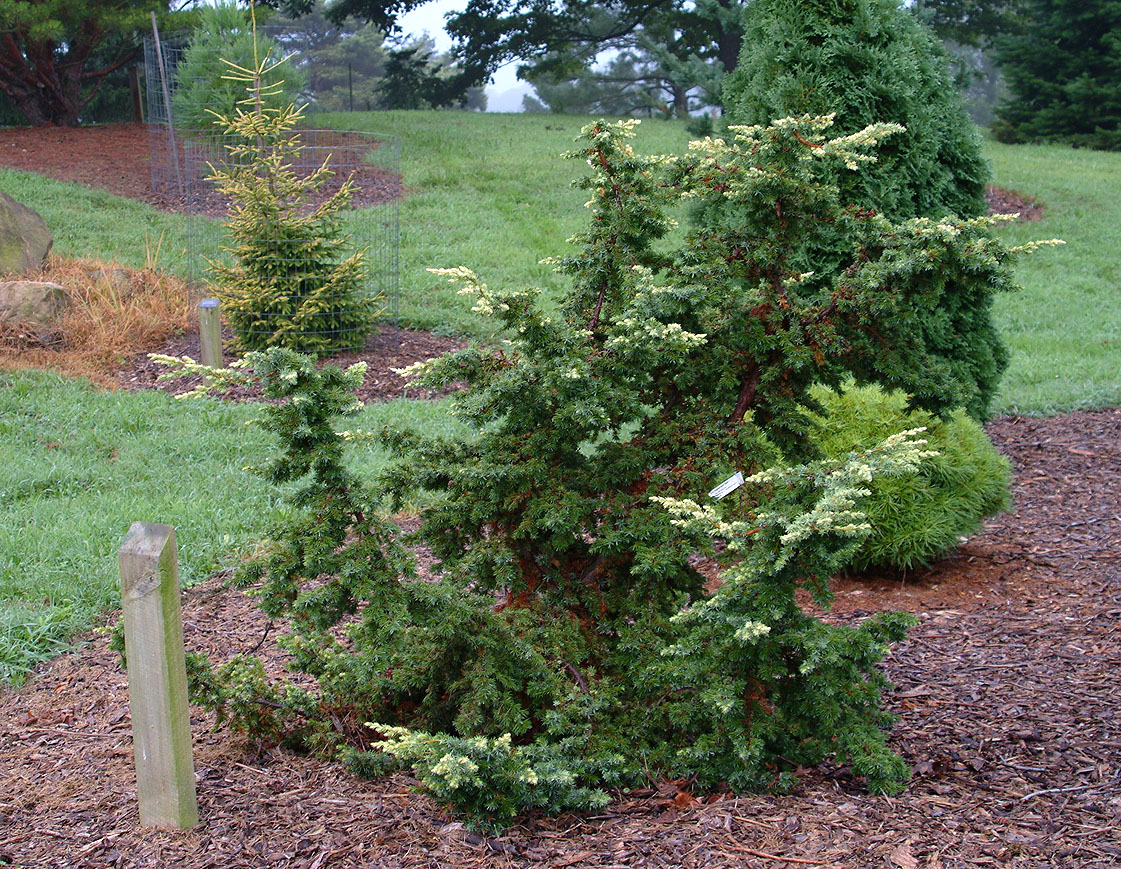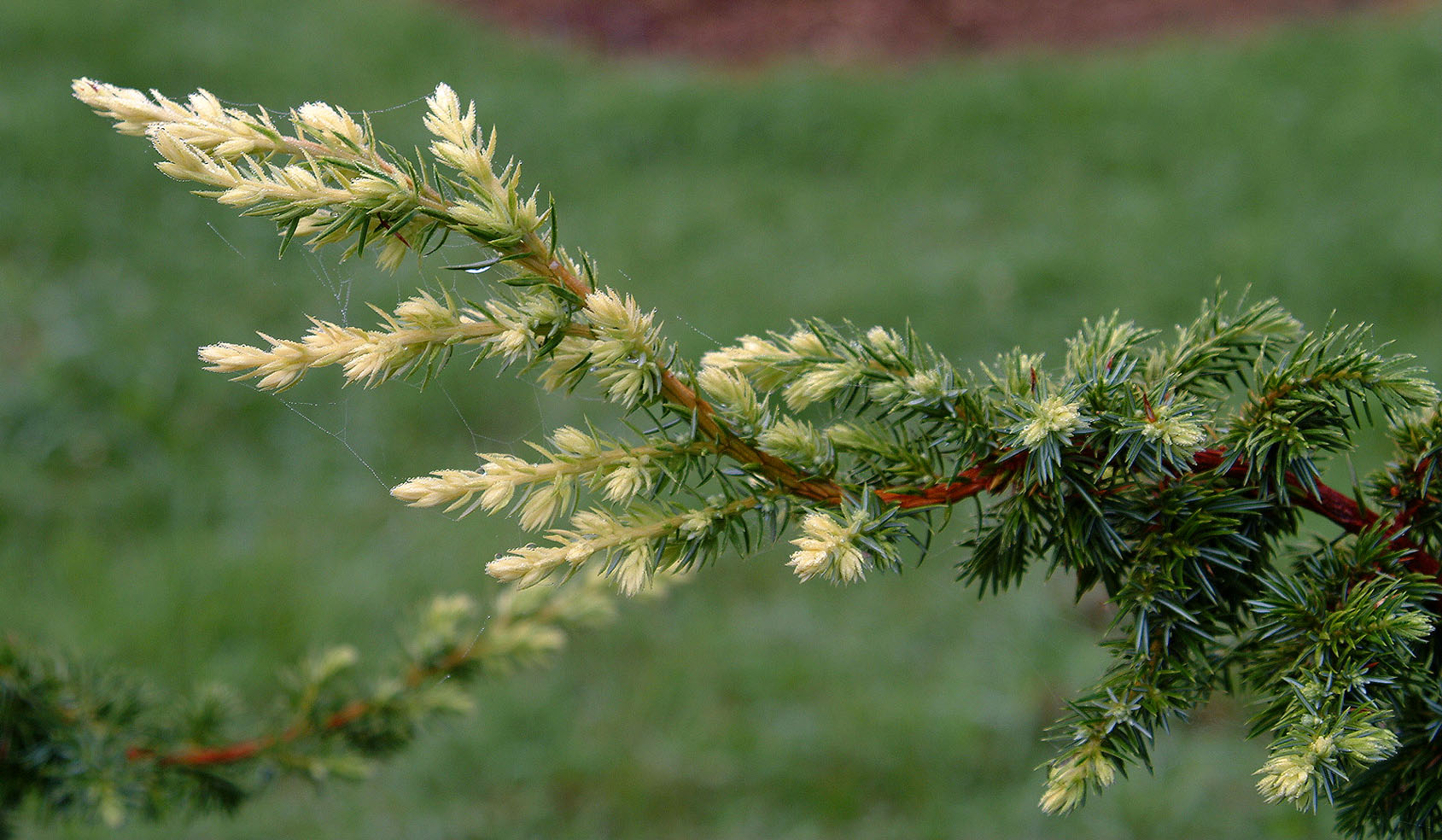NOS
JUNIPERUS RIGIDA
PAGE |
Copyright 2003. New
Ornamentals Society. All Rights Reserved.
Lawful for online access only by current society members.
All downloading, printing, saving to media, imaging, screen capture, or
offline use is prohibited.
Duplication by any means, method, or technology is unlawful.
Do not link to this page. |
Juniperus rigida var. conferta = J.
conferta
Juniperus rigida 'Akebono'
lc:white-tipped, actually white or
white-speckled, becoming white.
ns: this plant is known from the Raulston Arboretum c. 1990 where 'Hikari' (see
below) is
ns: also grown. It is an erect plant and clearly not J. conferta 'Akebono'.
It is
ns: not clearly different from 'Hikari' but if anything is paler and less
colorful. But
ns: given that both plants are now heavily shaded, it is hard to compare them
ns: in a good phenotype.
Juniperus rigida 'Filiformis'
ha: branches elongated,
thread-like, pendulous
or: Japan
in:L Macimowicz to St. Petersburg, Russia before 1909
Juniperus rigida var. nipponica
(Maxim.) Wilson
ha: prostrate, spreading
ll: shorter, some just 6-10mm long (they are easily 10-25mm in species and 'Pendula')
frt: seeds mostly solitary (var. rigida usually has 2-3 seed) - this may be a
case for species rank!
geo: mountains of Japan
in: E.H. Wilson to Arnold Arboretum 1915
 'Pendula'
- click image to enlarge
'Pendula'
- click image to enlarge
Boxerwood Gardens, Lexington,
Virginia US. Summer 2003. An tall grand old plant. There are bigger ones in the
US but few much more intact
and picturesque. I tend to prefer examples of the cultivar which have had a
little bad luck and lost the occasional limb. They have a more
picturesque aspect after recovering. Sadly, some loose their tops and never come
out right again.
Juniperus rigida 'Pendula' provisional
name
ha: distinctly pendulous with secondary limbs handing
down vertically.
ha: The species has conical and more erect forms in the wild with only the
ha: very tips pendulous or slightly nodding.
lc: rich olive-green, more yellowish than the mature foliage of 'Hikari' for
lc: example. Plants in colder areas bronze slightly but never as would
lc: J. communis cultivars.
ns: From Wilson's photographs of the original populations
it appears
ns: only some plants are this pendulous. It is logical
he or someone
ns: introduced this female clone with extreme pendulous
nature. Such a
ns: very appealing plant would gain popularity quickly Judging from a
ns: truly rigid, tip-nodding plant of the species at the US National
ns: Arboretum this clone is vastly superior for color and beauty. As
ns: it is always female (in our experience) and
is vegetativel
ns: propagated this old cultivar name has merit. The name does not
ns: appear to have valid publication before 1959 and may require
ns: a rename.
id: The 1998 RHS checklist suggests it might be J. communis
id: 'Oblonga Pendula' but we have never seen a plant in the US
id: referrable to that species. There is a remote possibility this
id: is the Japanese clone 'Filiformis' (see above). Our American
id: examples of 'Pendula' are quite often thread-like in part.
sex: female - cones are often numerous after 10
years or so.
 'Hikari'
click image to enlarge
'Hikari'
click image to enlarge
Dawes Arboretum. August 2003. Note
the interesting multi-stemmed, spreading-horizontal branching that gives this
plant a different and open
look for a juniper.
 'Hikari'
click image to enlarge
'Hikari'
click image to enlarge
Same plant as above but close up, showng the handiwork of a spider early in
the morning.
Juniperus rigida 'Hikari'
lc: gold-tipped by literature but
actually ivory or cream, appearing white from a distance.
Juniperus rigida 'Shirya-tosho'
ns: a listed name from Japan. We
have not seen it and do not believe it in US collections in 2003.
in: known in Germany since 1978 per Lewis' RHS Checklist (1998)
Juniperus rigida 'Spiraliter
Falcata'
lt: needles slightly curved or
sickle-shaped
or: Japanese gardens before 1906
Juniperus rigida 'Wansdyke Spreader'
ha: prostrate, spreading
ll: said to be typical and not short as in spreading var. nipponica - we have
not seen it to confirm this.
or: Artiaki Arboretum, Japan before 1975.
in: H. Welch, Wansdyke Nursery, England, probably early 1980's.
li: Welch, H.J. (undated in 1980's). Novelties for inclusion in
2nd edition. 14
li: as 'NEW NAME' without description.
 'Pendula'
- click image to enlarge
'Pendula'
- click image to enlarge 'Hikari'
click image to enlarge
'Hikari'
click image to enlarge